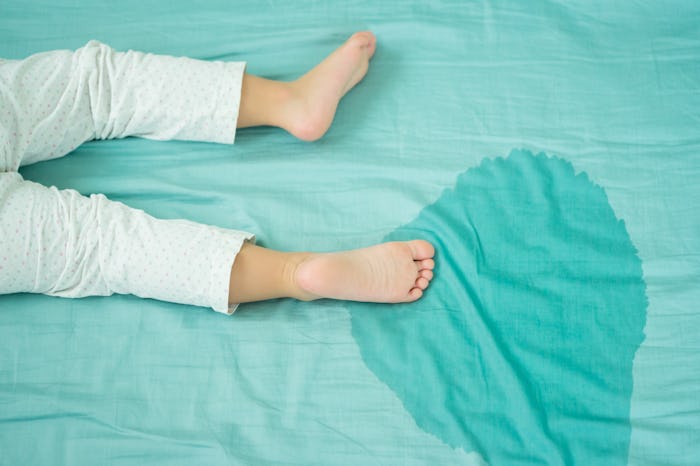Home

How To Wash A Mattress Cover
To keep it in good shape, refrain from pouring bleach or scalding hot water into the washer.
Arguably one of the greatest inventions of all time is the waterproof mattress cover. Not only for kids who are potty training, but also for those of us grown-ups who are a bit clumsier than others — I can’t begin to tell you how many mugs of coffee I’ve accidentally spilled in bed. Waterproof mattress covers work to protect the mattress underneath from all kinds of spills and stains — coffee, pee, tea and everything in between. So the next time you spill something, you’ll need to know the proper way to wash a waterproof mattress cover.
How to wash a mattress cover
While it depends a bit on the brand and material of your mattress cover, there are a few core things you need to make sure you do no matter what brand of waterproof mattress cover you own.
“When it comes to washing a machine-washable mattress protector, be sure to look at the details on the care instruction label,” says Aaron Feldman, director of product and brand strategy at Casper. Doing so will tell you everything you need to know about:
- The temperature of water you should (or shouldn’t) use.
- The dryer cycle that works best.
- Whether any special washing practices are recommended.
“We do not recommend dry-cleaning the protector or washing it using solvents, bleach, or fabric softener. Bleach can damage the fabric and cause it to break down over time. If you need to remove tough stains, use a mild detergent and lukewarm water instead,” Feldman says.
“For best results, we recommend you machine wash on cold and tumble dry low to ensure the mattress protector lasts as long as possible. It will be tempting to wash and dry on hot, however, doing so could cause delamination and shrinkage,” he says.
Can you wash a mattress cover in the washing machine?
Before you put your mattress cover in the wash, check the label. If it is labeled as machine washable, Feldman suggests that you put your mattress protector into the washing machine either on its own or with very similar materials, like sheets or pillow cases. Beyond that, you should know that:
- Cold water is preferred when washing a mattress cover because it will prevent any of the fibers from shrinking.
- Use a mild detergent that doesn’t have any built-in softeners. Softeners will affect your mattress cover’s ability to absorb any spills or stains.
- Set your washing machine to “delicate” or “gentle” to ensure your mattress cover is thoroughly washed without being put through the wringer.
- Once the first wash cycle is through, add another rinse cycle to your washing machine to ensure all the laundry detergent is out. Dried-out detergent in the mattress protection material can irritate your skin through your fitted sheet and may lead to mold and mildew.
Can you dry a waterproof mattress cover in the dryer?
As with all bedding, you’ll want to be sure that your mattress cover is completely dry before you put it back on your bed or your child’s bed. But can it go in the dryer? Usually, yes, your mattress cover can go in the dryer. There are a few ways to dry your waterproof mattress cover safely, Feldman explains, including drying it in the dryer on tumble dry or low-heat settings. If you don’t want to put it in the dryer, you can also air-dry it in the sun, or hang your waterproof mattress cover in front of a large fan.
Do mattress covers need to be washed?
While you obviously need to wash the cover whenever there is a spill or potty accident, if you have a miracle and go a while without incident, you may be wondering when it’s time to wash your mattress cover. The Beloit Mattress Company suggests washing a mattress cover at least once per month, unless you suffer from allergies, it’s on a guest bed, or obviously, if there’s a big spill or leak.
Best Waterproof Mattress Covers
Did you mess up your mattress cover by washing it with bleach and drying it on high heat before reading this article? I’ve got you covered with this top-rated mattress covers.
As always, check your waterproof mattress cover’s tag to ensure you follow any specific directions they provide. If you’ve pulled the tag off or just aren’t sure, always use cold water, and wash on the delicate cycle with no fabric softener or bleach, and dry your waterproof mattress cover on tumble dry on the lowest heat setting with no dryer sheets. Dryer sheets and fabric softener ruin the absorbency of the cover, which could mean that it is no longer waterproof. If you’re able to, the very safest way to clean it is simply to spot-treat it and let the mattress cover air dry.